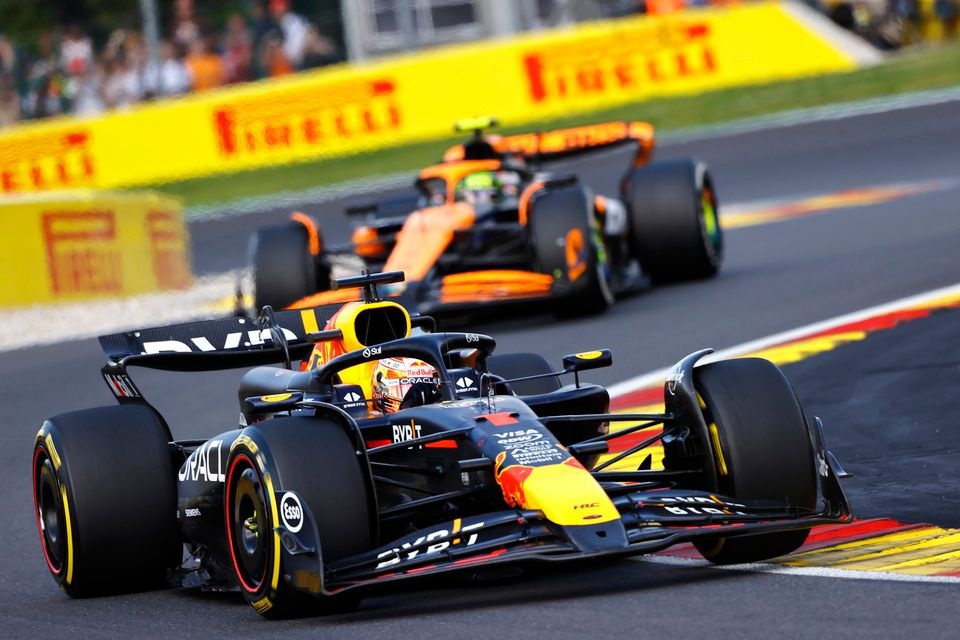Revolutionizing Tyre Selection: Pirelli’s New Approach for the F1 Summer Races
Pirelli has unveiled its revised tyre compound lineup for the upcoming Formula 1 summer events, emphasizing strategic adjustments tailored to each circuit’s unique demands. These changes aim to optimize performance while addressing historical challenges faced at high-speed tracks like Silverstone and Spa-Francorchamps.
Adjusted Tyre Choices for Key Grands Prix
For the British and Belgian Grands Prix, Pirelli has maintained the same compound allocations as last season at the Red Bull Ring and Hungaroring, with the C3, C4, and C5 compounds designated as the hard, medium, and soft options, respectively. However, Silverstone’s tyre selection will be slightly softer this year, with the C2, C3, and C4 compounds serving as the hard, medium, and soft choices. This shift reflects a strategic move to better manage the circuit’s high-speed corners and the potential for tyre degradation.
Learning from Past Challenges at Silverstone and Spa
Historical incidents, such as the tyre failures during the 2013 British GP-prompting Pirelli to revert to a previous carcass specification-and the 2020 Silverstone race, which saw multiple delaminations, have influenced current tyre strategies. Silverstone’s high-speed nature and demanding corners make it a particularly challenging venue, where softer compounds could increase the risk of tyre issues. Conversely, Spa-Francorchamps, with its mix of high-speed straights and technical turns, presents a different set of considerations, making the tyre choices there more straightforward and appealing.
Innovative Compound Strategy for the Belgian GP
Following a season opener that largely featured dry, one-stop races, Pirelli is exploring the possibility of diversifying compound sequences by not strictly adhering to the previous order. For the Belgian Grand Prix, the plan is to assign the C3 and C4 compounds as the medium and soft options, respectively, but to replace the C2 with the C1 as the hard compound. This approach aims to widen the performance gap between the hardest and medium tyres, giving teams more strategic options and reducing predictability in race tactics.
Strategic Implications of the New Tyre ‘Step’
Introducing a more distinct ‘step’ between tyre compounds at high-speed circuits adds a layer of complexity to tyre management and race strategy. The goal is not necessarily to push teams toward a two-stop approach but to create a broader spectrum of viable strategies-particularly between choosing the hardest and medium compounds. This variation encourages teams to weigh their options carefully, balancing durability against speed.
Balancing Performance and Reliability
The rationale behind making the hard compound more durable is to potentially slow down a one-stop race, as the harder tyre can withstand more stress and allow drivers to push harder without immediate degradation. However, this durability might come at the expense of outright pace compared to a two-stopper using softer compounds. Achieving the right balance requires extensive simulation and analysis of performance data from early races, ensuring that the differences between compounds fall within a precise performance window.
Anticipating Race Dynamics with New Tyre Strategies
By fine-tuning the tyre compounds and their performance gaps, Pirelli aims to introduce greater unpredictability and excitement into race outcomes. The challenge lies in ensuring that the hard and medium tyres are sufficiently distinct to influence strategic decisions without making a one-stop race unfeasible. The Belgian GP, with its mix of fast straights and technical sections, serves as an ideal testing ground for these innovative tyre strategies, providing valuable insights into their real-world effectiveness.
Expert Insights on Tyre Strategy Evolution
Mario Isola, Pirelli’s Motorsport Director, emphasizes that teams are adept at adapting their strategies based on tyre performance. “While we’re not explicitly pushing for a two-stop race, the close proximity of the three compounds often leads teams to consider switching between the hard and medium tyres to optimize their race plans,” he explains. This strategic flexibility is expected to add an extra layer of excitement and unpredictability to the upcoming races.
Looking Ahead: The Future of Tyre Strategy in F1
As Formula 1 continues to evolve, tyre strategy remains a critical element influencing race outcomes. Pirelli’s latest adjustments aim to strike a balance between safety, performance, and strategic diversity, ensuring that teams face meaningful choices rather than predictable patterns. With ongoing data collection and analysis, the tyre selections for future races will likely become even more refined, pushing the boundaries of racing innovation.
Stay Informed
Be the first to receive real-time updates and insights on tyre strategies and race developments by subscribing to our newsletter. Stay ahead of the curve with expert analysis and the latest news from the world of Formula 1.

